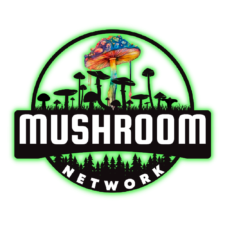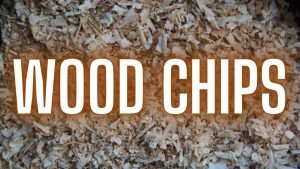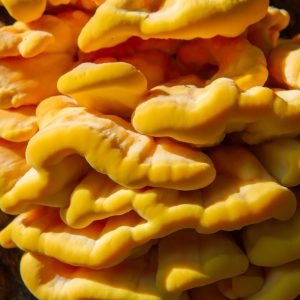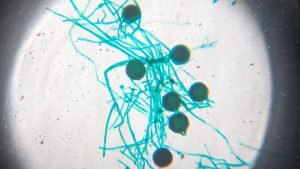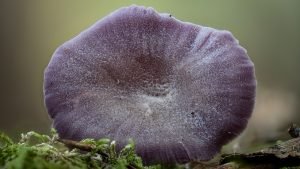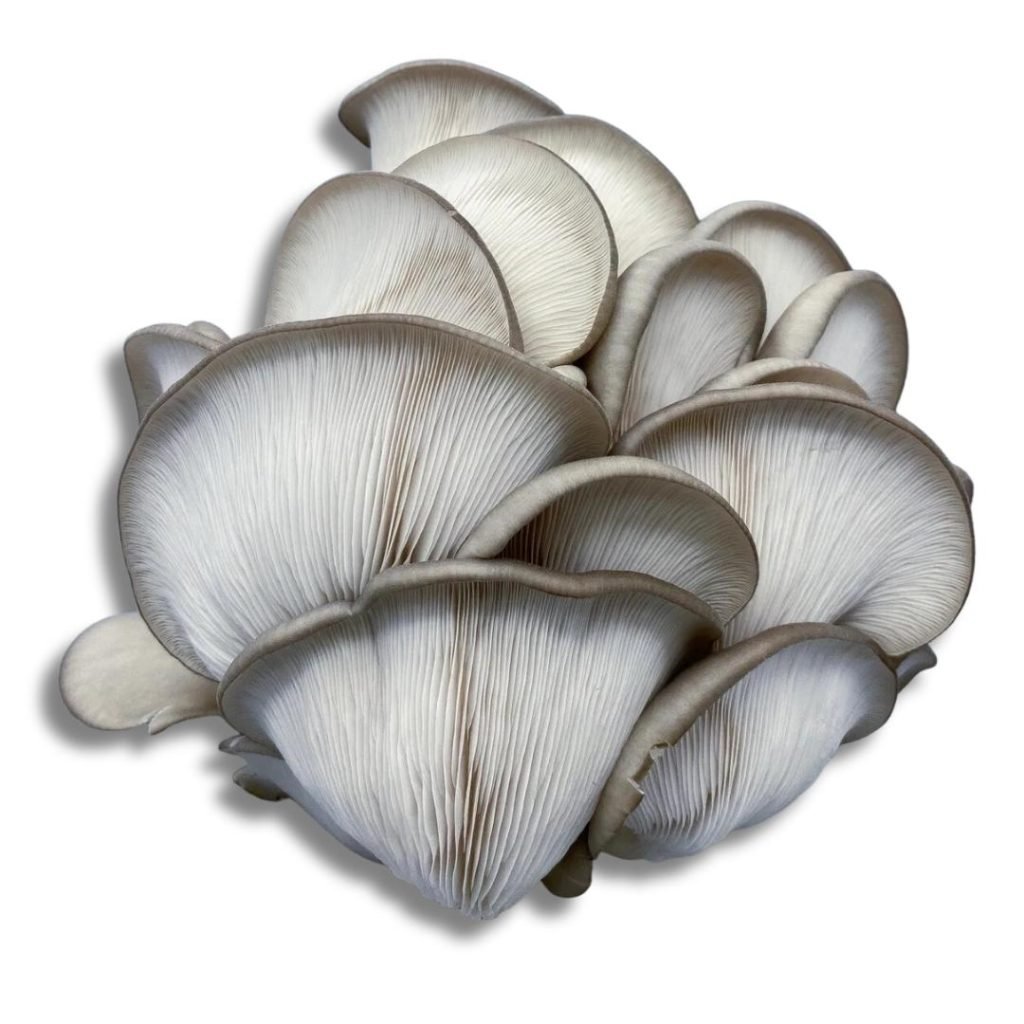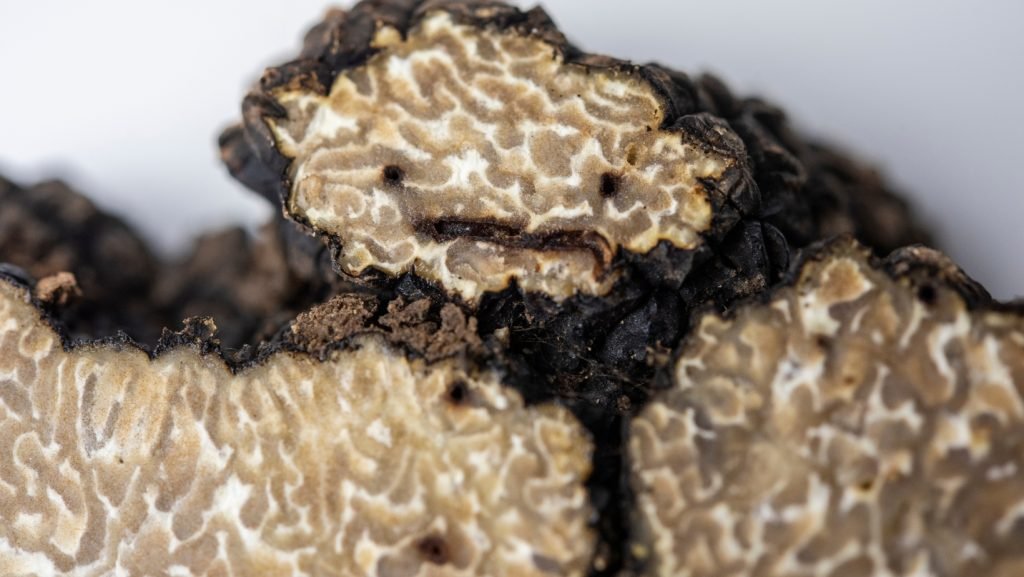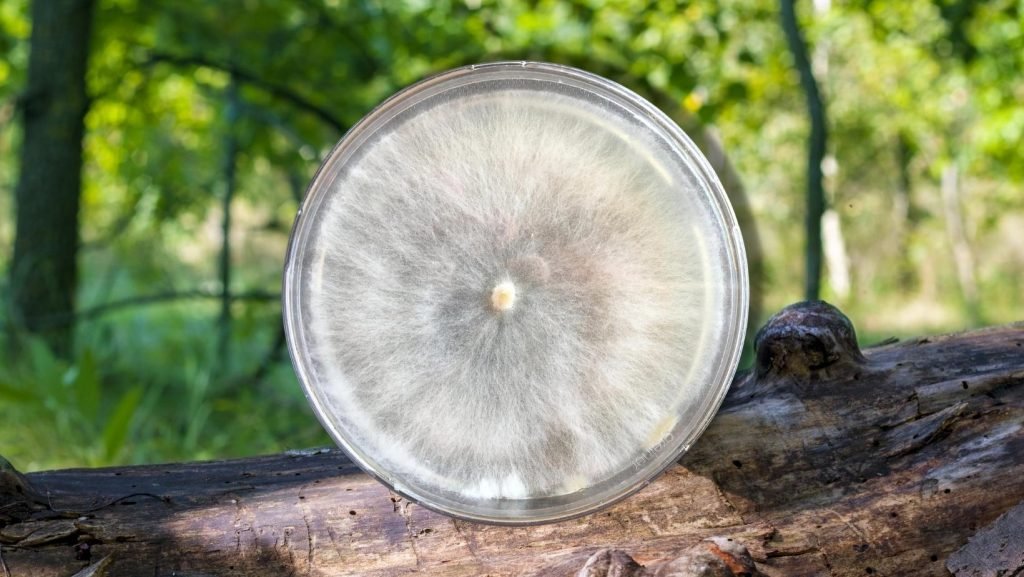Unlock the potential of wood chips, a widely utilized substrate in the vast expanse of mycology, and step into the organic foundation that fosters flourishing fungal communities.
The utilization of wood chips as a substrate is a versatile endeavor, making it approachable for greenhorn enthusiasts while retaining depths of complexity for the seasoned mycologists to explore and optimize.
INTRODUCTION:
You’re about to delve into a dynamic, ever-evolving guide. As the landscape of mycology grows and shifts, so will the content of this page. Embark on this journey with us, and equip yourself with a comprehensive list of materials, a detailed breakdown of ingredients, and a step-by-step guide tailored to your level of expertise.

MATERIALS NEEDED:
- Hardwood chips (like oak, beech, or alder)
- Water
- A large pot or pressure cooker
- Pint or quart-sized mason jars with lids
- Gypsum (optional but very beneficial)
- Thermometer
- Measuring cup and spoons
Wood Chips TEK Quick Reference Chart:
| Ingredients | Pint Jar | Quart Jar |
|---|---|---|
| Hardwood chips | 150g | 300g |
| Water | 180ml | 360ml |
| Gypsum | 5g (optional) | 10g (optional) |
| Pressure Cooking Time | 90 Minutes | 90 Minutes |
| Pressure Cooking PSI | 15 PSI | 15 PSI |
Note: Gypsum is optional, but they enhance texture and nutritional content.

PROCEDURE:
Wood Selection:
- Start your substrate journey by opting for hardwood chips. Popular choices include oak, maple, or beech.
- The dense and fibrous nature of hardwoods makes them a favorable medium for many wood-loving fungi and offers natural resistance to potential contaminants.
Gypsum Integration:
- If you’re looking to add gypsum, spread the wood chips on a flat, clean surface.
- Sprinkle the gypsum uniformly over the chips and mix well. Gypsum aids in breaking up the compact nature of wood chips, creating a more favorable texture for mycelium to navigate and colonize.
Soaking the Wood Chips:
- Transfer your wood chips (and gypsum if used) to a large pot or basin.
- Fill with water until the chips are completely submerged. This soaking step ensures thorough hydration of the chips, preparing them for colonization.
Draining Process:
- Once the soaking duration is complete, utilize a colander or mesh bag to allow the water to drain.
- It’s essential for the wood chips to retain moisture without being overly saturated, as too much water can be counterproductive and risk contamination.
Jar Preparation:
- Filling: Begin filling your sterilized pint or quart-sized jars with the damp wood chip and pack evenly.
- PLEASE NOTE: If you followed our recipe (shown above) you shouldn’t have to worry about this however, ensure you leave about a 1-inch gap at the top to facilitate room for expansion and air exchange.
- Securing Lids: When placing the lid, ensure the rubber seal faces upward. This helps prevent the jars from getting vacuum-sealed during the sterilization process. Another option is to use a mycology lid such as one that contains a filtered vent and/or injection port (we have articles, DIY Supplies, and both Free & Paid for Mycology Courses hosted on our 🍄 Mushroom Academy!
- Foil Cover: Wrap the tops of the jars with aluminum foil. This provides an added layer of protection against potential moisture intrusion during pressure cooking.
Sterilization:
- Prepare your pressure cooker by placing a cloth or a metallic stand at its base. This acts as a buffer, preventing the jars from direct contact with the heat source.
- Arrange the jars inside the cooker and set it to 15 PSI. Let it run for 90 minutes, ensuring all potential pathogens within the substrate are eradicated.
Cooling Phase:
- After the sterilization cycle, it’s crucial to allow the pressure cooker and its contents to cool naturally.
- Once room temperature is achieved, jars are ready for inoculation, the step where you introduce the mushroom culture to your substrate.
Remember, each step is integral to the success of your mycological endeavors. The universe of mushrooms is expansive, each variant bearing its own unique charm and characteristics. The Marketplace on the 🍄 Mushroom Network is a testament to this diversity. It is a haven for those seeking a deeper understanding of the magical world of mushrooms. If you’re keen on learning more about this type of mushroom and other mushroom variants, this Marketplace is your ultimate resource.
No posts found!
ADDITIONAL INSIGHTS & TIPS:
Why Hardwoods? The inherent properties of hardwoods—dense and fibrous—provide a robust substrate that’s not only resistant to contaminants but also favored by many mushroom species. Their complex structure offers ample nutrition and an ideal environment for fungi to thrive.
Alternative Woods: While hardwoods are often the go-to, don’t be discouraged if they’re not readily available in your region. Aim for any non-resinous wood types, such as poplar or alder. Avoid woods like pine or spruce, as they contain resins that might inhibit mycelial growth.
Neutralizing Acidity with Gypsum: Some woods may have acidic properties. Gypsum’s calcium and sulfur content can help neutralize this acidity, creating a balanced pH environment for mycelium.
Enhanced Substrates for the Curious: Those looking to explore and innovate might consider mixing wood chips with substrates like straw, coffee grounds, or rice bran. Such blends can influence factors like colonization speed, yield, and even the potency of certain mushroom species.
The Sterilization Imperative: Emphasize sterilization always. It’s the gatekeeper in the cultivation process. Properly sterilized substrates drastically reduce the risk of contamination, setting the stage for a thriving mycelial network. An extra few minutes ensuring your sterilization process is thorough can save weeks of potential frustration.
Feeling daunted? Don’t be! The 🍄 Mushroom Academy has distilled complex mycological practices into digestible courses, catering to every level of expertise. Whether you’re just stepping into the realm or are a seasoned expert, we’ve crafted unique lessons to simplify TEKs like the wood chip substrate and much more. Deepen your knowledge, refine your skills, and become a master of the mycelium with us. Whether you’re a beginner eager to learn or an experienced mycologist looking to broaden your knowledge, the 🍄 Academy has something for everyone.
Related Reads:
Substrate for Mycology: A Comprehensive Guide on Wood Chips
Unlock the potential of wood chips, a widely utilized substrate in the vast expanse of...
Read More...
CONCLUSION:
The world of mycology is expansive, mysterious, and absolutely captivating. As you venture deeper, remember that the 🍄Mushroom Network is your steadfast companion. With a reservoir of well-researched articles, meticulously crafted courses in our 🍄 Mushroom Academy, and a premium range of mycology supplies, we’re here to ensure your every step is grounded in knowledge and confidence. Join us and weave your own tale in the tapestry of mycology.
Don’t forget to check out the 🍄 Mushroom Network’s Marketplace to see what’s available. But hurry, our shelves are constantly evolving, and you wouldn’t want to miss out on this wonderful mushroom. Join our growing network of Patrons, Genetics, and Mycologist Vendors only on the 🍄 Mushroom Network!
Recommended Reads:
Chicken of the Woods: The Tasty Forest Delight
A culinary-focused article exploring recipes and preparation methods for this mushroom. Chicken of the Woods:...
Read More...Shrooms of War: How Fungi Have Been Used in Combat
Fungi, with their vast diversity and adaptability, have not only graced our dinner tables or...
Read More...Beyond the Naked Eye: Advanced Techniques in Contaminant Detection
About This Article: Journey with the Mushroom Network into the microscopic realm! 🍄 Discover advanced...
Read More...Amethyst Deceiver (Laccaria Amethystina)
Welcome, fungi enthusiasts and scholars! Step into the enchanting world of Laccaria Amethystina, a mushroom...
Read More...Whoa there, Spore Sport! 🍄 Looks like you’re not logged in yet. Don’t you know what you’re missing? MYCO-CREDITS! Imagine all the fungal fun you could have. It’s like finding a Morel in May and not picking it. Tragic, right? Log In or Become a Myco-Patron and start racking up those credits. It’s more rewarding than finding a mushroom in your backyard! 🌟🏡
